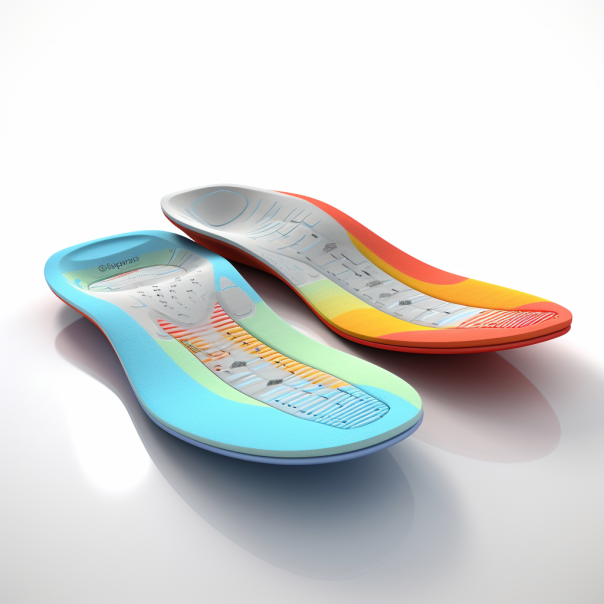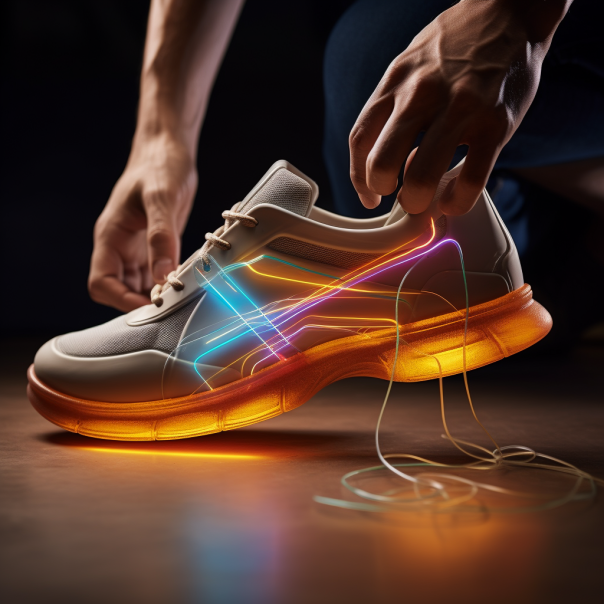Orthotics are shoe inserts designed to provide support and cushioning for the feet. They are often prescribed by doctors or podiatrists to help alleviate foot pain and correct gait abnormalities. However, many people wonder if they can use orthotics in their regular shoes or if they need to purchase special orthopedic shoes.
The answer is that it depends on the type of orthotics and the type of shoes. Some orthotics are designed to fit into any shoe, while others are made specifically for certain types of shoes. It’s important to choose the right type of orthotics for your needs and to make sure they fit properly in your shoes to avoid discomfort or further foot problems.
Understanding Orthotics
Orthotics are custom-made inserts that are designed to support and improve the function of the feet. They are often prescribed by podiatrists, orthopedic surgeons, and other healthcare professionals to treat a variety of foot and lower limb conditions.
Orthotics can be made from a variety of materials, including foam, plastic, and carbon fiber. They are designed to fit inside shoes and can be used to correct a range of foot problems, including flat feet, high arches, and plantar fasciitis.
Orthotics work by redistributing pressure across the foot, reducing the amount of stress placed on certain areas. They can also help to improve foot and ankle alignment, which can reduce pain and improve overall function.
It is important to note that not all shoes are suitable for use with orthotics. Shoes that are too tight or too loose can affect the fit and function of the orthotic, which can reduce their effectiveness. It is recommended that patients work with their healthcare provider to find shoes that are appropriate for their specific needs.
Overall, orthotics can be a valuable tool in the treatment of foot and lower limb conditions. They are custom-made to fit the patient’s feet and can be used to correct a range of problems. Patients should work closely with their healthcare provider to ensure that they are using the right orthotics and wearing them in the right shoes.
Benefits of Using Orthotics in Shoes
Improving Foot Function
Orthotics are shoe inserts that are designed to improve foot function. They can help to correct structural abnormalities in the feet, such as flat feet or high arches, and improve the way the feet move when walking or running. By improving foot function, orthotics can help to reduce pain and prevent injuries.
Reducing Pain
Orthotics can be used to reduce pain in the feet, ankles, knees, hips, and lower back. They work by providing support and cushioning to the feet, which can help to reduce pressure on the joints and soft tissues. Orthotics can also help to redistribute weight more evenly across the feet, which can help to reduce pain and discomfort.
Preventing Injuries
Orthotics can be used to prevent injuries in the feet, ankles, knees, and hips. They can help to reduce the risk of overuse injuries, such as plantar fasciitis and shin splints, by providing support and cushioning to the feet. Orthotics can also help to prevent injuries from occurring in the first place by improving foot function and reducing the risk of falls and other accidents.
In summary, orthotics can provide a range of benefits to people who suffer from foot pain, discomfort, or injuries. By improving foot function, reducing pain, and preventing injuries, orthotics can help people to stay active and healthy. It is important to consult with a healthcare professional before using orthotics to ensure that they are the right choice for your individual needs.
Types of Shoes Compatible with Orthotics
Athletic Shoes
Athletic shoes are a great option for those who require orthotics. They are designed to provide support and comfort, which makes them an ideal choice for people with foot problems. Some of the most popular brands of athletic shoes that are compatible with orthotics include New Balance, Asics, and Brooks. These shoes are available in a variety of styles and sizes to accommodate different needs.
Casual Shoes
Casual shoes are another great option for people who require orthotics. They are designed to be comfortable and provide support, which makes them a good choice for everyday wear. Some of the most popular brands of casual shoes that are compatible with orthotics include Clarks, Merrell, and Ecco. These shoes are available in a variety of styles and sizes to accommodate different needs.
Dress Shoes
Dress shoes are often a challenge for people who require orthotics because they tend to be more rigid and less accommodating. However, there are some brands that offer dress shoes that are compatible with orthotics. Some of the most popular brands of dress shoes that are compatible with orthotics include Rockport, Florsheim, and Johnston & Murphy. These shoes are available in a variety of styles and sizes to accommodate different needs.
Overall, there are many types of shoes that are compatible with orthotics. It is important to choose shoes that are designed to provide support and comfort, and to ensure that they fit properly. By doing so, people can enjoy improved foot health and reduced pain.

How to Insert Orthotics into Shoes
Inserting orthotics into shoes is a simple process that can be done in a few easy steps. Here’s how to do it:
- Remove the existing insole: If the shoe has an existing insole, it should be removed before inserting the orthotic. The insole can be easily removed by pulling it out of the shoe.
- Place the orthotic inside the shoe: The orthotic should be placed inside the shoe with the heel of the orthotic lined up with the heel of the shoe. The orthotic should be pushed down firmly to ensure that it is properly seated in the shoe.
- Adjust the fit: Once the orthotic is in place, the fit of the shoe may need to be adjusted. The laces or straps of the shoe may need to be loosened or tightened to ensure that the shoe fits comfortably with the orthotic in place.
- Test the fit: After adjusting the fit, it’s important to test the shoe to make sure that it feels comfortable and supportive with the orthotic in place. The wearer should walk around in the shoe to see how it feels.
By following these simple steps, anyone can easily insert orthotics into their shoes to improve their comfort and support.
Possible Challenges and Solutions
Fit Issues
One of the main challenges when it comes to using orthotics in shoes is ensuring a proper fit. Orthotics can take up additional space in the shoe, making it difficult to find shoes that fit comfortably. In some cases, the orthotic may not fit properly in the shoe, which can cause discomfort or even pain.
To address fit issues, it is important to ensure that the orthotic is properly sized and shaped to fit the individual’s foot. It may be necessary to try different types of shoes or even custom-made shoes to accommodate the orthotic.
Comfort Problems
Another challenge with using orthotics in shoes is ensuring that they are comfortable to wear. Some people may experience discomfort or pain when wearing orthotics, particularly if they are not used to wearing them. In some cases, the orthotic may cause blisters or other skin irritations.
To address comfort problems, it is important to choose orthotics that are designed for the individual’s specific foot condition. It may also be necessary to gradually increase the amount of time spent wearing the orthotics to allow the feet to adjust.
Overall, while there may be some challenges associated with using orthotics in shoes, many people find that they are an effective way to manage foot pain and improve foot health. With the right fit and proper use, orthotics can provide significant benefits for those with foot conditions.
Maintenance of Orthotics in Shoes
Orthotics are designed to provide support and comfort to the feet, but they also require proper maintenance to ensure their effectiveness. Here are some tips for maintaining orthotics in shoes:
- Clean the orthotics regularly: Orthotics should be cleaned regularly to prevent the buildup of dirt and bacteria. Use a damp cloth to wipe the orthotics clean and allow them to air dry.
- Replace the insoles: The insoles of the shoes should be replaced regularly to prevent wear and tear. This will also ensure that the orthotics fit properly in the shoes.
- Store the orthotics properly: Orthotics should be stored in a cool, dry place when not in use. Avoid exposing them to direct sunlight or extreme temperatures.
- Check for wear and tear: Check the orthotics regularly for signs of wear and tear. If the orthotics are damaged, they may need to be replaced.
- Use the right shoes: Orthotics are designed to fit specific types of shoes. Make sure to use the right shoes to ensure that the orthotics fit properly and provide the necessary support.
Overall, proper maintenance of orthotics is essential to ensure their effectiveness and longevity. By following these tips, individuals can keep their orthotics in good condition and continue to enjoy the benefits of proper foot support.
Conclusion
In conclusion, orthotics can be an effective solution for individuals who suffer from foot pain or require additional support. Many types of orthotics are available on the market, including custom-made and over-the-counter options.
While orthotics can improve foot function and reduce pain, it is important to note that they are not a cure-all solution. Orthotics should be used in conjunction with other treatments, such as physical therapy or medication, as part of a comprehensive treatment plan.
It is also important to ensure that orthotics are properly fitted and adjusted to the individual’s foot. Poorly fitting orthotics can cause additional foot pain and discomfort.
Overall, the decision to use orthotics should be made in consultation with a healthcare professional, such as a podiatrist or orthopedic surgeon. They can help determine if orthotics are the right solution for the individual’s specific foot condition and provide guidance on selecting the appropriate type of orthotic.


